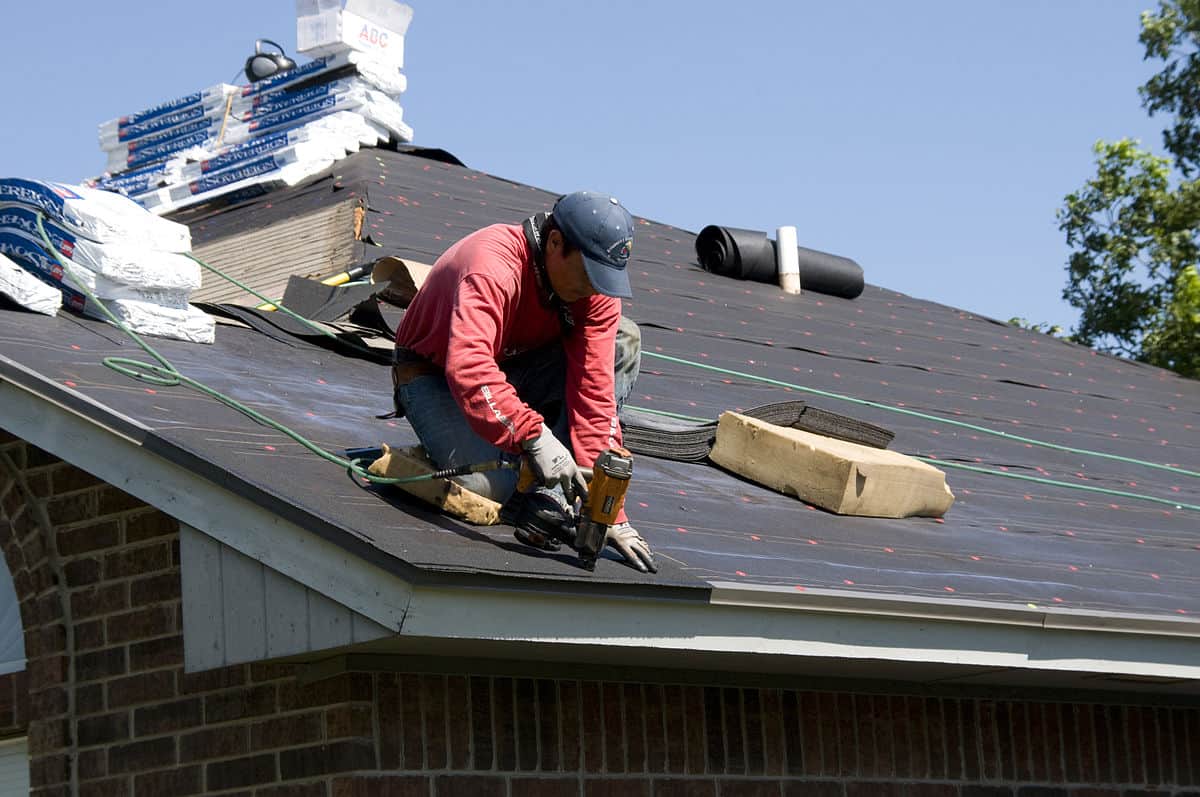Step-by-Step Guide to Finding the Right Roofing Companies in Gainesville
Step-by-Step Guide to Finding the Right Roofing Companies in Gainesville
Blog Article
Ideal Practices for Ensuring Appropriate Roof Covering Ventilation
Making sure appropriate roofing ventilation is essential for the long life and performance of a roof. A well balanced intake and exhaust vent proportion, frequently 1:300, plays a crucial role, with intake vents preferably placed at the reduced edge of the roofing system for amazing air entrance and exhaust vents at the optimal for cozy air exit. Normal inspections to determine obstructions and preserve clear air movement are vital. Keeping insulation away from vents is crucial to stop air movement restriction. Recognizing these foundational aspects establishes the phase for even more detailed understandings into installation and upkeep practices that can considerably improve your roof's performance.
Understand Air Flow Basics
Properly understanding ventilation basics is crucial for ensuring the long life and effectiveness of roof covering systems. Efficient air flow alleviates moisture accumulation and temperature extremes in the attic room, both of which can lead to substantial architectural damages over time. A well-ventilated roof helps in stopping typical issues such as mold and mildew development, timber rot, and ice dams, which can compromise the integrity of the roofing products and the underlying frameworks.
The key objective of air flow is to help with the activity of air, enabling a regular exchange between the indoor and exterior environments. This balance is accomplished through a mix of intake and exhaust vents that interact to preserve optimum air movement. Consumption vents, commonly situated along the soffits or eaves, allow fresh air to get in the attic room, while exhaust vents, frequently positioned at or near the roof ridge, enable hot, humid air to get away.
Secret aspects affecting the efficiency of roofing ventilation consist of proper placement, appropriate sizing, and making sure that both consumption and exhaust vents are unblocked. Normal inspection and upkeep are important to determine potential obstructions, damage, or inadequacies in the air flow system, thereby securing the roofing's efficiency and resilience.
Kinds Of Roof Vents
Roofing vents play an essential duty in maintaining reliable attic ventilation and, by expansion, the general wellness of the roof system. Numerous types of roof vents are readily available, each with special advantages customized to particular roof demands.

Soffit vents are set up under the eaves and operate in tandem with roof covering vents to guarantee a well balanced intake and exhaust system. By enabling cooler air to enter from below, soffit vents assist in the expulsion of hot air via top vents. Gable vents, located on the outside wall surfaces of the attic, deal another effective option, especially in homes with gable roofing systems.
Assess Your Current Ventilation

Following, think about the age and problem of your roofing materials and air flow components. Older systems might not follow present building regulations or may have weakened over time, minimizing their efficiency. Conduct a complete exam to identify any kind of indicators of wear and tear, such as corrosion, damage, or spaces that can jeopardize the system's performance.
Furthermore, gauge the attic temperature click to read more level and moisture levels. Heats and moisture can show inadequate air flow - gainesville roofing companies. Utilize a hygrometer and thermometer to acquire exact analyses, comparing them with exterior conditions. Persistent inconsistencies suggest potential concerns that need addressing.
Installment Best Practices
Effective setup of roofing air flow systems is critical for check my blog guaranteeing ideal efficiency and long life. Proper installation starts with understanding the certain ventilation requirements of the roof covering and the structure it covers. This entails calculating the proper ratio of intake to exhaust vents, typically sticking to the 1:300 regulation, which specifies one square foot of ventilation for every 300 square feet of attic room floor area.

The placement of vents is similarly important. Consumption vents need to be mounted at the roof covering's reduced side, often in the soffits, to allow amazing air to go into. Exhaust vents, on the various other hand, should be mounted near or at the roofing's top to promote the exit of cozy, moist air. This develops a natural air flow that helps preserve temperature level and dampness balance within the attic area.
Seal all air vent connections diligently to avoid air leaks and possible water seepage. Usage top quality products and adhere to maker standards to ensure durability and effectiveness. In addition, integrating ridge vents with baffles can considerably improve airflow efficiency by stopping wind-driven rain and snow from entering the attic room.
Ultimately, precise installation of roof covering air flow systems minimizes potential issues such as mold and mildew development, ice dams, and architectural damages, making sure the roof covering's honesty and the building's overall health and wellness.
Normal Upkeep Tips
Uniformity in upkeep practices is essential to making certain the lasting effectiveness of roof covering air flow systems. During these inspections, make certain that vents are complimentary of debris, nests, and various other obstructions that might restrain air flow.
Cleansing the vents is one more vital task. Make use of a soft brush or a vacuum cleaner to remove dust and debris from intake and exhaust vents. Beware not to damage the vent screens or louvers throughout the procedure. Additionally, check the attic room area for any signs of water damage, which could compromise the stability of the roof system.
Correct insulation is similarly vital. Ensure that attic room insulation does not block the vents, as this can drastically restrict airflow. If any kind of insulation has moved or worked out, reposition or replace it to preserve a reliable obstacle.
Finally, change any type of damaged or missing components quickly. Damaged vents, split tiles, or worn-out blinking can all add to inadequate ventilation and ought to be attended to right away. Regular maintenance makes sure that the roof covering ventilation system works efficiently, consequently extending the life-span of the roof itself.
Final Thought
Making sure proper Check This Out roof air flow is critical for keeping the efficiency and sturdiness of a roof system. Adherence to the 1:300 consumption and exhaust vent proportion, paired with the strategic positioning of vents, is necessary.
A balanced consumption and exhaust vent proportion, typically 1:300, plays a crucial duty, with consumption vents preferably placed at the lower side of the roofing system for cool air entrance and exhaust vents at the optimal for warm air exit. Intake vents, commonly located along the eaves or soffits, allow fresh air to get in the attic room space, while exhaust vents, typically situated at or near the roofing ridge, make it possible for warm, moist air to leave.
Soffit vents are mounted under the eaves and work in tandem with roofing system vents to guarantee a well balanced consumption and exhaust system. By permitting cooler air to go into from below, soffit vents assist in the expulsion of hot air via upper vents. Adherence to the 1:300 intake and exhaust air vent proportion, coupled with the critical placement of vents, is important.
Report this page